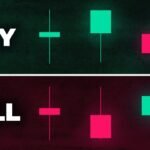Introduction to Bullish Candlesticks
When it comes to analyzing stock charts, candlestick patterns play a crucial role in helping traders understand market sentiment. One of the most common and important candlestick patterns is the bullish candlestick, which signifies a potential uptrend in the stock price.
Identifying Bullish Candlestick Patterns
Bullish candlesticks are characterized by a long body with a closing price higher than the opening price. These candles typically indicate that buyers are in control and are pushing the price higher. Some common bullish candlestick patterns include the hammer, engulfing pattern, and piercing pattern.
Interpreting Bullish Candlesticks
When you see a bullish candlestick pattern on a stock chart, it is important to consider the context in which it appears. For example, a bullish candlestick following a prolonged downtrend may signal a potential reversal in the stock price. Traders often use bullish candlesticks to confirm buy signals and plan their entry and exit points.
Trading Strategies with Bullish Candlesticks
There are several trading strategies that incorporate bullish candlestick patterns. One popular strategy is to wait for a bullish reversal pattern to form and then enter a long position with a stop-loss below the pattern. Another approach is to combine bullish candlesticks with other technical indicators to validate trading signals.
Conclusion
Understanding bullish candlesticks is essential for anyone looking to succeed in stock trading. By learning how to identify, interpret, and trade using bullish candlestick patterns, traders can improve their decision-making process and potentially increase their profits in the market.
Hashtags: #BullishCandlesticks #StockMarket #TechnicalAnalysis #TradingStrategies
Please provide the Keyword related Blog posts that you want to insert.





